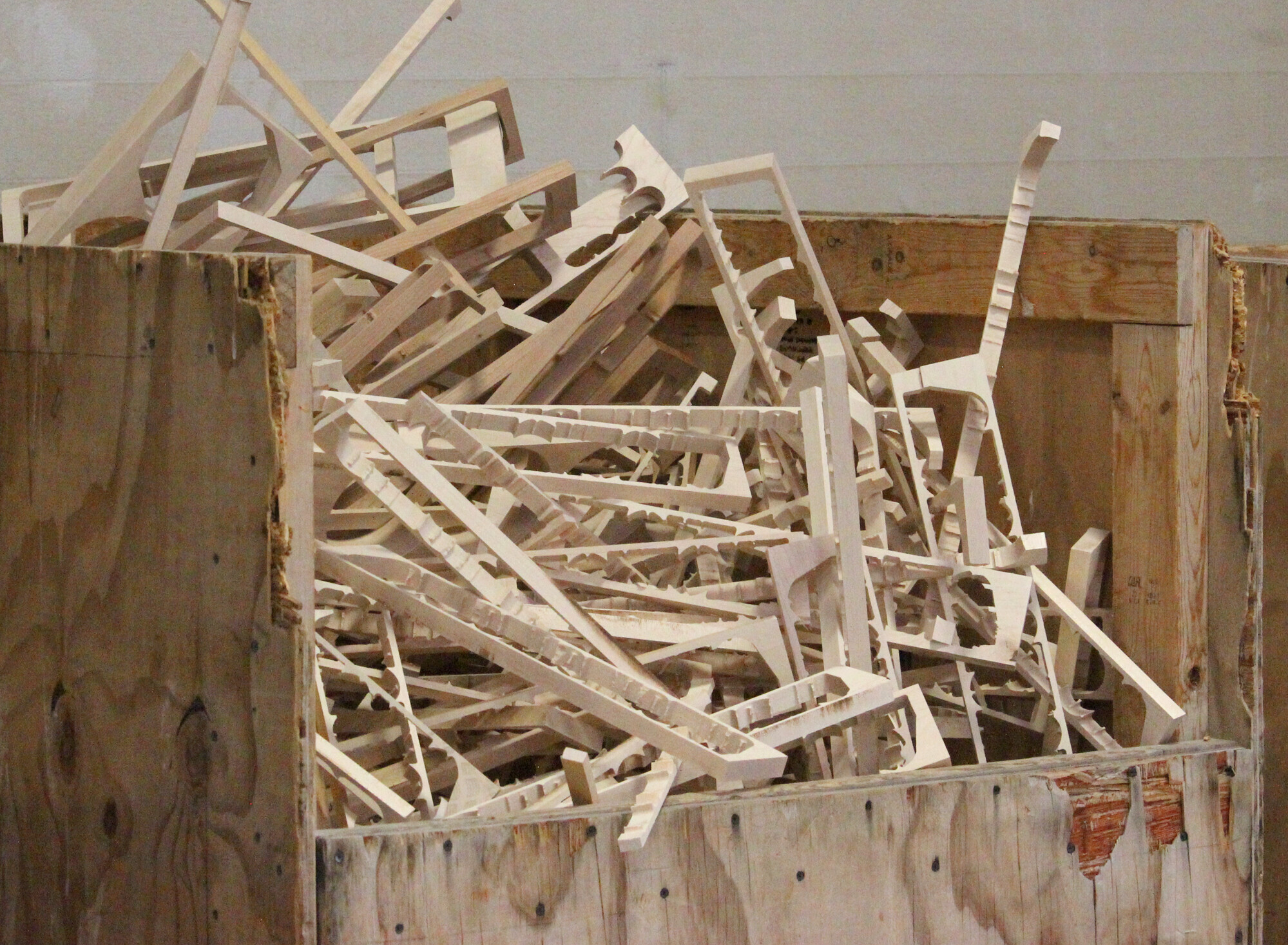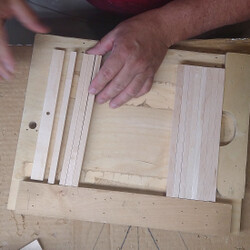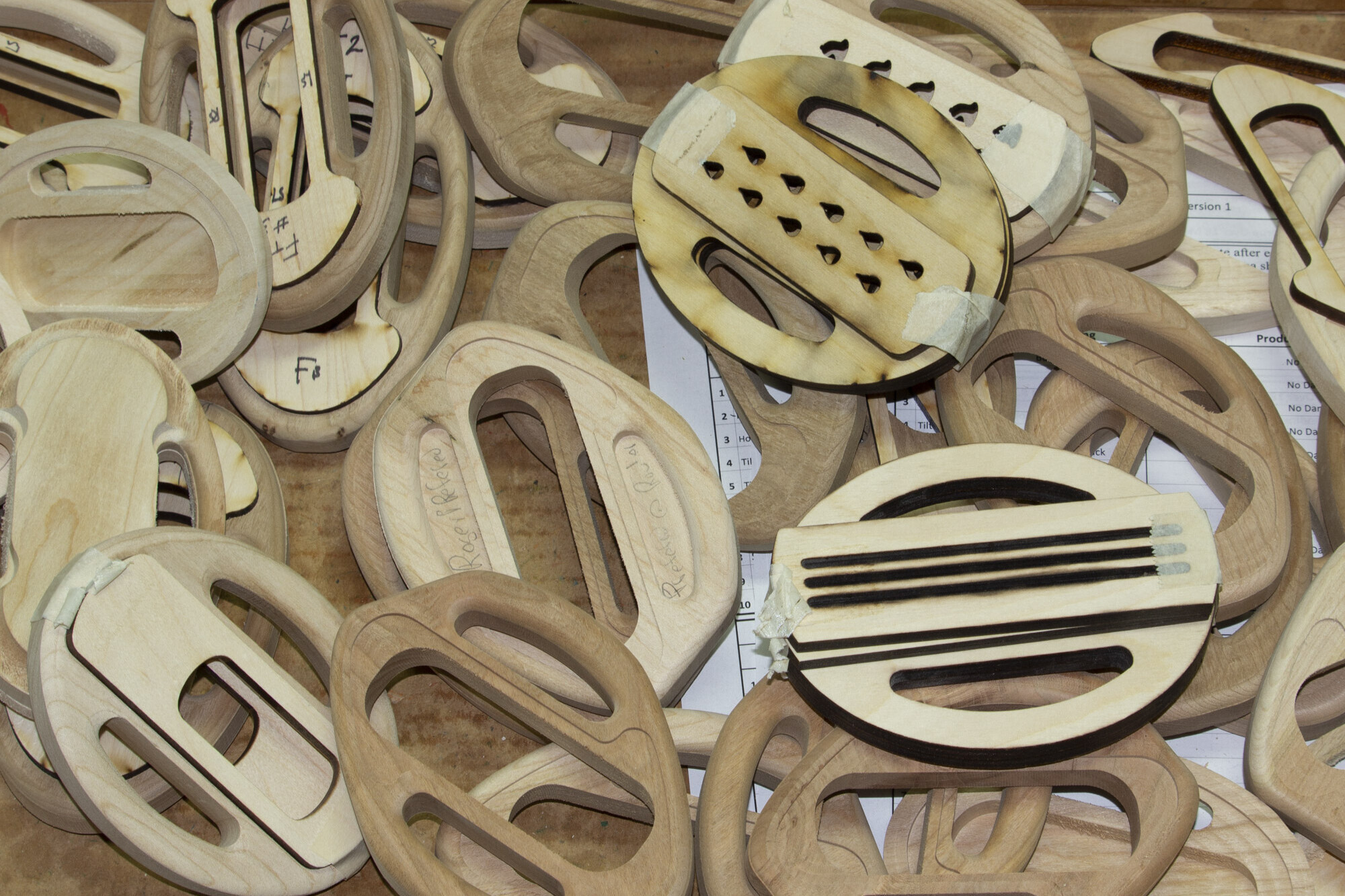Trash Or Treasure? Giving Wood Scraps A New Life

As a woodshop that produces thousands of items each year, we simultaneously produce a substantial amount of sawdust and scrap wood. If you've ever done a home woodworking project, imagine that but on a much larger scale. That said, we are always mindful of our scrap and what to do with it, taking steps to ensure that our waste material is not, in fact, wasted.
Let's start with the sawdust. Tour participants often comment about how clean the shop is for such a busy woodshop. From the air to the far-flung corners of the building, there simply is not much sawdust, certainly not the excessive piles that woodshops are typically portrayed with. Each machine is connected to a powerful vacuum system (known as the "dust collector") which takes in any sawdust and transfers it to a wagon waiting beside the building. This wagon belongs to a local farmer who takes it away each weekend and returns it empty before the next week's production starts. What does he do with a weekly mountain of sawdust? It's bedding for his livestock! This is a mutually-beneficial use for the "waste" material - it benefits us by having the sawdust disposed of at no cost and minimal effort; it benefits the farmer by providing a free and consistent supply of bedding to suit his needs.
Sawdust addresses the small "wastes"; what about the bigger scrap pieces? We fill pallet-sized bins throughout the day and, when full, leave them outside in a lean-to for locals to help themselves. The wood is ideal for kindling - kiln-dried and small enough to get a fire going. Here in Vermont, our winters can be long and cold which many residents combat with a wood stove. What better way to warm up on a snowy, frigid February morning than a roaring fire started with clean, dry kindling? The irony is that we make scrap year-round and, while some campers enjoy the wood scraps to toast s'mores, the kindling bins are slower to empty when the temperatures reach into the 80s and 90s. Sometimes, it even takes a mid-summer nudge that the long-forgotten snow will eventually make it's return so stocking up now would be wise. Once the temperature drops, cars and trucks pass through our driveway at all times of day, many finding empty bins that were picked clean in a matter of minutes. Planning is everything!

On occasion, the kindling bins will be visited for larger pieces of wood that have some residual crafting value and, every now and then, such a piece can be found. However, we are skilled at viewing scrap pieces as potential material for a new product. The wind spinners are a classic example of internally-repurposed scrap (pictured here being assembled). Those have become so popular that demand outpaced the scrap wood that we use in them.
No matter the stage in our production process, we are acutely aware of our impact on the local environment and make every effort to minimize that impact. It is something the old time Vermonters call “common sense”.



